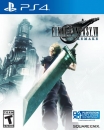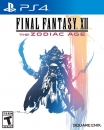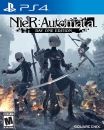FORGE UPDATE OVERVIEW | SEASON 4

Forge will be getting a slew of new updates when Season 4: Infection lands on June 20. Ranging from placeable water to beautiful new Forerunner objects and brand-new mode logic, Forge’s ability to create new experiences is only getting better. These additions, along with some quality-of-life updates and bug fixes, mean there’s never been a better time to start building.
There’s a lot to cover with this update, so let’s dive right into it!
NEW OBJECTS
STATIC WATER PLANE
For the first time in Halo’s history, Forge will be receiving a placeable and scalable water object. This static water plane, which is meant to help Forgers art up their creations, will provide an entirely new way to add detail and character to every map.


Beyond Season 4, we plan on continuing to expand Forge’s water objects with a dynamic volume as well.
FORERUNNER OBJECT PALETTE ADDITIONS
The visually stunning Forerunner object palette will be getting even more pieces with Season 4. A plethora of new objects and decals - of varying shapes and use cases - will be available for Forgers to use however they see fit. Whether you want to build structures that would reflect the power of the Forerunner ecumene at its peak or create fun-filled custom games, these beautiful objects will now be in your hands in short order.

UNIVERSAL BLOCKER OBJECT
We currently have very specific types of blocker objects such as Player Blockers, Projectile Blockers, Vehicle Blockers, One Way Blockers, and Team Blockers in Halo Infinite. While this granularity has been extremely valuable, players have had to use multiple blocker objects to smooth out surfaces or add containment on their maps. With Season 4, we’ll be adding a new set of Universal Blockers which will block Players, Vehicles, and Projectiles. This new object type should help speed up a map’s polish phase while also reducing the budget overhead in those situations.
MINIGAME MODE
Minigame, a brand-new game mode in Halo Infinite, will allow creators to build modes from scratch. Much like Halo 5’s Minigame mode, this mode contains no underlying game logic and gives Forgers complete control of making the mode they desire.
Along with Minigame’s release, we are excited to be introducing Generic Game Mode Objects to Forge. These objects are decoupled from any mode logic, meaning players will be able to place and script experiences without being tied to a particular mode. Want to capture a hill in a CTF game? Want to gain vampire traits whenever you hit someone with an Oddball in a Slayer match? Want to score points for hurling a ball through an Area Monitor in Last Spartan Standing? We've got you covered.
The three objects you'll have access to in Season 4 are:
- Generic Capture Zone
- Generic Skull
- Generic Ball

To complement the new mode and Forge objects, scripting via Node Graph will receive a few quality-of-life nodes to make common scripting tasks a little easier. Many of these nodes were requested by members of the Forge community and we were happy to get them included with the launch of Minigame.
In addition to the ~25 nodes associated with the Generic Game Mode objects, here are the new quality of life nodes being added to Node Graph:
- “Get Object By Label” - Make Object Lists without using Object References
- “Get Is Game Mode” - Run logic only in certain game modes
- “Increment Number Variable” – An easier way to Get, Add, and Set advanced number variables
- “Toggle Boolean Variable” – An easer way to Get, Branch, and Set advanced boolean variables
- “Boolean NOT” - Negate a boolean variable. By popular demand.
- “Global Custom Event, Async” – Run custom events asynchronously
- “Stopwatch” nodes – the ability to create, start, pause, and reset timers from any point in script. Stopwatches will be able to trigger other scripts based on how much time has elapsed.

All of these additions combined mean that when Season 4 launches, Forge will be able to build entirely new modes that combine multiple mode objectives into a single cohesive and entirely unique experience.
BUDGET IMPROVEMENTS
We’ve also heard the community feedback about wanting to have the various aspects of a map’s budget communicated effectively. We want to ensure creators can take full advantage of each system’s budget, understand it more clearly, and ultimately maximize Forge’s potential.

As seen in the image above, the new budget categories will be broken down as follows:
GLOBAL SIMULATION
- The overall cost of entities networked by the game, including dynamic objects, projectiles, units, actions, etc.
- Dev Note: Some global systems like Audio, Stats, and Player Networking will reserve simulation memory when the game starts so they always have bandwidth regardless of what's happening on the map.
FORGE SIMULATION
- The overall cost of Forge specific entities, including dynamic and static objects, prefabs, user strings, Node Graph elements, etc.
OBJECT LIMITS
- Dynamic
- Total
- Vehicles
- FX Count
- Reflection Volumes
- Movers
- Dev Note: These are specially marked objects that animate/move before all other objects and can have specialized physics interactions with players. Mover objects will be added to Forge in a future update.
- Animations
- Physics
- Collision
- Static
- Total
NODE GRAPH
- Total: The total % of Node Graph content currently contributing to Simulation Memory.
SCRIPTING BUDGET
- Each script brain has limits on how many nodes and node connections it can contain. (128 Nodes, 512 connections)
RUN TIME BUDGET
The Run Time Budget, shown in Forge Play mode, will switch to showing the runtime budget that is the fullest at any given moment. When runtime budgets are exceeded, the engine stops creating more instances of that type of entity.
Run Time Budget Categories:
- Navpoints
- Objectives
- Managed Objects (objects spawned during play but not part of the map, like weapons, equipment, grenades, etc.)
VFX IMPROVEMENTS
As hinted at in our recent Spartan Chatter episode with Forge Lead Designer, Michael Schorr, the VFX system will also see improvements.
In Season 4, VFX objects—such as placeable fires and explosions—will be able to be scaled to your desired size. These VFX objects are also getting two high-requested toggles to help ensure Forgers can use them in various ways. The new Damage and Audio output options for these VFX objects mean that they don’t always need to deal damage or play sound effects, that can now be determined directly by the map maker themselves.

QUALITY OF LIFE UPDATES
We’ve also been working hard to bring additional quality of life (QoL) updates to your existing workflows. One update that will help players art up their maps even faster is that material changes will now affect all objects within a prefab. Previously, only the parent of the prefab would have its material changed, but now this bulk change should help convert a prefab into the desired look even faster.
Another QoL improvement is tied to the asset management side of Forge. Now, when saving a new version of a Forge map in the pause menu, players will be able to add a custom note for that version. This is extremely helpful for documenting changes made during a Forge session, especially when looking at a map’s version history. We expect this to help with personal projects as well as larger group efforts that have multiple collaborators.
Beyond these core additions, improvements, and quality of life updates though, there will also be many bug fixes coming with Season 4. Issues reported to the team via the Halo Support site are shared directly with the Forge team and prioritized based on severity and frequency. If you run into any issues, be sure to submit a ticket so that the team can investigate appropriately.
The full list of bug fixes will be provided in our Season 4 Patch Notes, which will be found at aka.ms/HaloInfiniteUpdate, when the update goes live on June 20.





































































